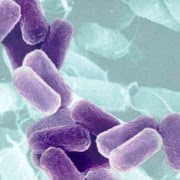
Researchers at the University of Pennsylvania and other institutions have identified an enzyme that appears to play a key role in bringing on sexual dysfunction in both men and women – and a second molecule that can just as easily yank the offending enzyme out of commission. The findings, which carry the possibility of new treatments for sexual disorders, are scheduled to appear in two papers in the March 13 issue of Biochemistry, a peer-reviewed journal of the American Chemical Society, the world’s largest scientific society.
Led by Penn chemist David W. Christianson, the team found that the enzyme arginase can effectively short-circuit a biochemical pathway critical to male sexual arousal. But unlike remedies developed expressly for erectile dysfunction, which have proven disappointing in clinical trials with women, treatments that home in on arginase may offer hope for both sexes.
"There is intense interest in new targets for sexual dysfunction therapy," said Christianson, the Edmund and Louise Kahn Professor in the Natural Sciences. "Arginase should be a target in men and women alike, insofar as sexual dysfunction arises in both from circulation defects in the genitalia."
Offering the means to strike that target, Christianson and his co-authors pinpoint the amino acid derivative S-(2-boronoethyl)-L-cysteine, also known as BEC, as one of the tightest-binding arginase inhibitors ever identified. BEC joins another powerful arginase-blocking compound, (S)-2-amino-6-boronohexanoic acid, which was identified by Christianson in 1999.
In the chemical pathway that leads to sexual arousal in both sexes, arginase comes into play somewhat before phosphodiesterase V, the target molecule of Viagra – which could present a new solution for the roughly 3 in 10 men for whom that medication is ineffective. Viagra has shown even less success in preliminary studies of female sexual dysfunction.
Healthy sexual function in both genders relies on a biochemical cascade as carefully orchestrated as any courtship ritual. At one critical step in that pathway, nitric oxide synthase converts arginine, one of the 20 human amino acids, into citrulline and nitric oxide. The latter product is said to be the principal mediator of penile erection; it facilitates neurotransmission and causes rapid relaxation of smooth muscle in the penis’ spongy tissue, allowing the thousands of tiny vessels there to swell with blood.
Arginase can derail this reaction by sequestering arginine and breaking it down into compounds unrelated to those physiologically responsible for arousal, depriving the genitalia of the nitric oxide needed for sexual function.
"Both Viagra and BEC function by blocking enzymes that can degrade key chemical players in this pathway," Christianson said. "The difference is that Viagra works several steps later than arginase-inhibiting compounds."
Erectile dysfunction, which afflicts half of men older than 40 to some extent, occurs when this enzyme-mediated pathway goes awry, impeding blood flow in and out of the penis. Female sexual dysfunction can also result from impaired blood flow to the genitalia. Sexual difficulties in both genders often manifest themselves as side effects of heart disease, hypertension, diabetes and the use of certain medications such as antidepressants.
Working with tissue taken from men undergoing penile prosthetic implantation, Christianson and his colleagues verified for the first time that arginase is present in the human penis. The group also found that administering BEC enhanced smooth muscle relaxation in human penile tissue, which triggers erection by allowing the penis’ spongy tissue to fill with blood.
Christianson is corresponding author of the two Biochemistry papers. He was joined by J. David Cox, Ricky F. Baggio and Evis Cama of Penn and authors at Boston University, Temple University, the University of Pittsburgh, the Wistar Institute in Philadelphia and Université Paris. The work was supported by the National Institutes of Health.
Source: Science Daily
Post a Comment